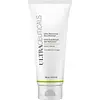What's inside
What's inside
 Key Ingredients
Key Ingredients

 Benefits
Benefits

 Concerns
Concerns

 Ingredients Side-by-side
Ingredients Side-by-side

Water
Skin ConditioningGlycerin
HumectantCocamidopropyl Betaine
CleansingPEG-120 Methyl Glucose Trioleate
CleansingSodium Lauroyl Sarcosinate
CleansingDecyl Glucoside
CleansingMagnesium Aluminum Silicate
AbsorbentOlive Oil PEG-7 Esters
EmollientGlycol Distearate
EmollientSodium Chloride
MaskingSodium Lauroyl Lactylate
EmulsifyingAvena Sativa Kernel Flour
AbrasivePropanediol
SolventLaureth-4
EmulsifyingXanthan Gum
EmulsifyingPanthenol
Skin ConditioningTocopheryl Acetate
AntioxidantCucumis Sativus Fruit Extract
EmollientCitrus Grandis Peel Oil
MaskingSalicylic Acid
MaskingCitric Acid
BufferingDisodium EDTA
Sodium Benzoate
MaskingTetrasodium EDTA
Sorbic Acid
PreservativeBenzyl Alcohol
PerfumingAloe Barbadensis Leaf Juice Powder
Skin ConditioningFormic Acid
PreservativeMaltodextrin
AbsorbentPotassium Sorbate
PreservativeSodium Hydroxide
BufferingLimonene
PerfumingWater, Glycerin, Cocamidopropyl Betaine, PEG-120 Methyl Glucose Trioleate, Sodium Lauroyl Sarcosinate, Decyl Glucoside, Magnesium Aluminum Silicate, Olive Oil PEG-7 Esters, Glycol Distearate, Sodium Chloride, Sodium Lauroyl Lactylate, Avena Sativa Kernel Flour, Propanediol, Laureth-4, Xanthan Gum, Panthenol, Tocopheryl Acetate, Cucumis Sativus Fruit Extract, Citrus Grandis Peel Oil, Salicylic Acid, Citric Acid, Disodium EDTA, Sodium Benzoate, Tetrasodium EDTA, Sorbic Acid, Benzyl Alcohol, Aloe Barbadensis Leaf Juice Powder, Formic Acid, Maltodextrin, Potassium Sorbate, Sodium Hydroxide, Limonene
Water
Skin ConditioningSodium Laureth Sulfate
CleansingPEG-8
HumectantCoco-Betaine
CleansingHexylene Glycol
EmulsifyingSodium Chloride
MaskingPunica Granatum Pericarp Extract
Skin ConditioningZinc PCA
HumectantPEG-120 Methyl Glucose Dioleate
EmulsifyingSodium Citrate
BufferingSodium Hydroxide
BufferingCaprylyl Glycol
EmollientCitric Acid
BufferingTrisodium Ethylenediamine Disuccinate
Maltodextrin
AbsorbentPentylene Glycol
Skin ConditioningTocopherol
AntioxidantSodium Benzoate
MaskingPhenoxyethanol
PreservativeParfum
MaskingWater, Sodium Laureth Sulfate, PEG-8, Coco-Betaine, Hexylene Glycol, Sodium Chloride, Punica Granatum Pericarp Extract, Zinc PCA, PEG-120 Methyl Glucose Dioleate, Sodium Citrate, Sodium Hydroxide, Caprylyl Glycol, Citric Acid, Trisodium Ethylenediamine Disuccinate, Maltodextrin, Pentylene Glycol, Tocopherol, Sodium Benzoate, Phenoxyethanol, Parfum
 Reviews
Reviews

Ingredients Explained
These ingredients are found in both products.
Ingredients higher up in an ingredient list are typically present in a larger amount.
Citric Acid is an alpha hydroxy acid (AHA) naturally found in citrus fruits like oranges, lemons, and limes.
Like other AHAs, citric acid can exfoliate skin by breaking down the bonds that hold dead skin cells together. This helps reveal smoother and brighter skin underneath.
However, this exfoliating effect only happens at high concentrations (20%) which can be hard to find in cosmetic products.
Due to this, citric acid is usually included in small amounts as a pH adjuster. This helps keep products slightly more acidic and compatible with skin's natural pH.
In skincare formulas, citric acid can:
While it can provide some skin benefits, research shows lactic acid and glycolic acid are generally more effective and less irritating exfoliants.
Most citric acid used in skincare today is made by fermenting sugars (usually from molasses). This synthetic version is identical to the natural citrus form but easier to stabilize and use in formulations.
Read more about some other popular AHA's here:
Learn more about Citric AcidMaltodextrin is a polysaccharide. It is derived from starch such as rice, corn, wheat, or potato starch.
In food, Maltodextrin is used to improve the texture and thicken a product. Due to its structure, it can help create a gel texture. As an emulsion stabilizer, it helps keep the ingredients in a product together.
As a polysaccharide, Maltodextrin has moisturizing properties. Polysaccharides are a type of carbohydrate. The top layer of skin uses polysaccharides to retain water, keeping the skin hydrated.
Maltodextrin is water soluble and has a sweet taste.
Learn more about MaltodextrinSodium Benzoate is a preservative. It's used in both cosmetic and food products to inhibit the growth of mold and bacteria. It is typically produced synthetically.
Both the US FDA and EU Health Committee have approved the use of sodium benzoate. In the US, levels of 0.1% (of the total product) are allowed.
Sodium benzoate works as a preservative by inhibiting the growth of bacteria inside of cells. It prevents the cell from fermenting a type of sugar using an enzyme called phosphofructokinase.
It is the salt of benzoic acid. Foods containing sodium benzoate include soda, salad dressings, condiments, fruit juices, wines, and snack foods.
Studies for using ascorbic acid and sodium benzoate in cosmetics are lacking, especially in skincare routines with multiple steps.
We always recommend speaking with a professional, such as a dermatologist, if you have any concerns.
Learn more about Sodium BenzoateChances are, you eat sodium chloride every day. Sodium Chloride is also known as table salt.
This ingredient has many purposes in skincare: thickener, emulsifier, and exfoliator.
You'll most likely find this ingredient in cleansers where it is used to create a gel-like texture. As an emulsifier, it also prevents ingredients from separating.
There is much debate on whether this ingredient is comedogenic. The short answer - comedogenic ratings don't tell the whole story. Learn more about comegodenic ratings here.
The concensus about this ingredient causing acne seems to be divided. Research is needed to understand if this ingredient does cause acne.
Scrubs may use salt as the primary exfoliating ingredient.
Learn more about Sodium ChlorideSodium Hydroxide is also known as lye or caustic soda. It is used to adjust the pH of products; many ingredients require a specific pH to be effective.
In small amounts, sodium hydroxide is considered safe to use. However, large amounts may cause chemical burns due to its high alkaline.
Your skin has a natural pH and acid mantle. This acid mantle helps prevent harmful bacteria from breaking through. The acid mantle also helps keep your skin hydrated.
"Alkaline" refers to a high pH level. A low pH level would be considered acidic.
Learn more about Sodium HydroxideWater. It's the most common cosmetic ingredient of all. You'll usually see it at the top of ingredient lists, meaning that it makes up the largest part of the product.
So why is it so popular? Water most often acts as a solvent - this means that it helps dissolve other ingredients into the formulation.
You'll also recognize water as that liquid we all need to stay alive. If you see this, drink a glass of water. Stay hydrated!
Learn more about Water